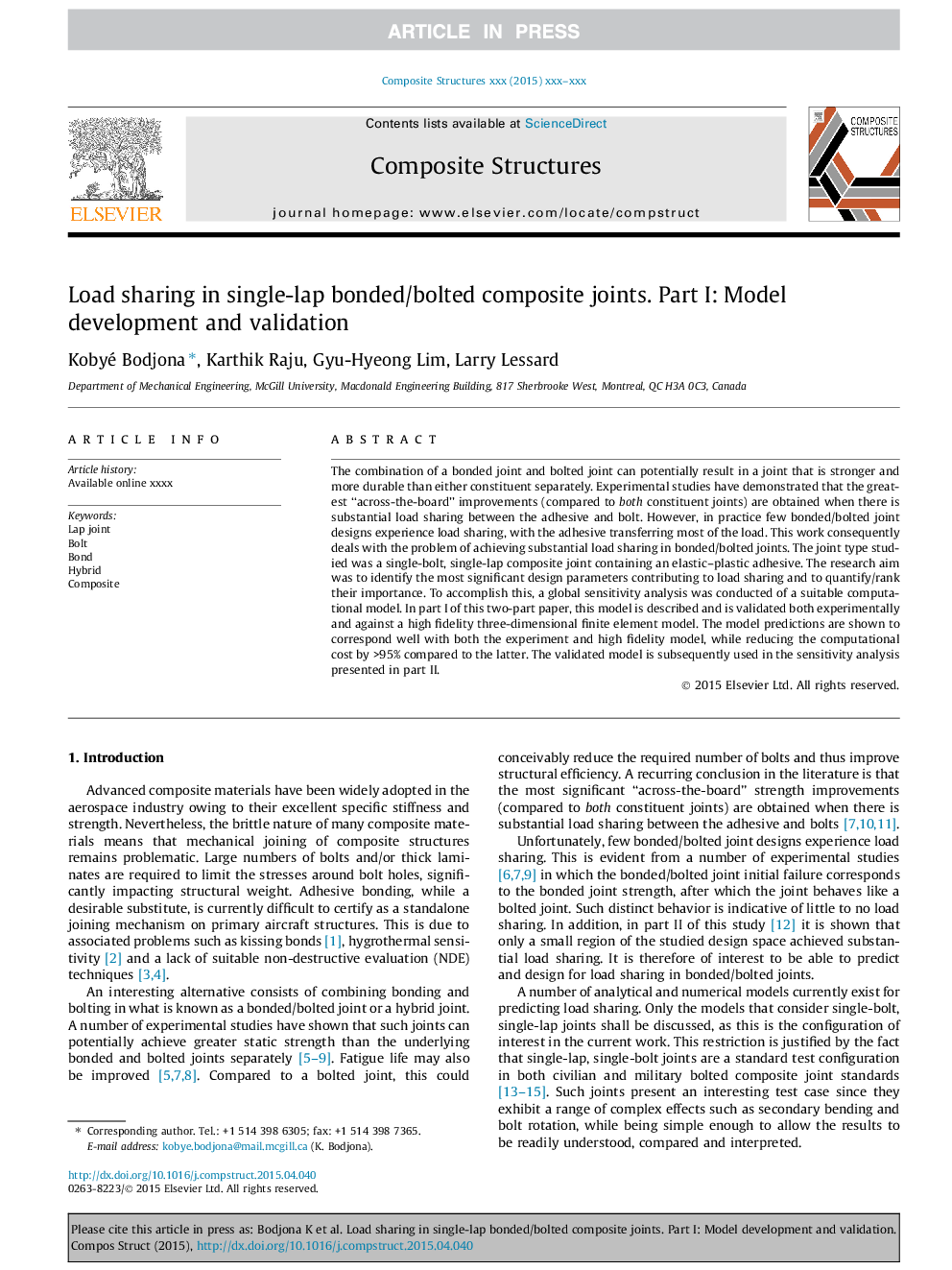| Article ID | Journal | Published Year | Pages | File Type |
|---|---|---|---|---|
| 6706739 | Composite Structures | 2015 | 8 Pages |
Abstract
The combination of a bonded joint and bolted joint can potentially result in a joint that is stronger and more durable than either constituent separately. Experimental studies have demonstrated that the greatest “across-the-board” improvements (compared to both constituent joints) are obtained when there is substantial load sharing between the adhesive and bolt. However, in practice few bonded/bolted joint designs experience load sharing, with the adhesive transferring most of the load. This work consequently deals with the problem of achieving substantial load sharing in bonded/bolted joints. The joint type studied was a single-bolt, single-lap composite joint containing an elastic-plastic adhesive. The research aim was to identify the most significant design parameters contributing to load sharing and to quantify/rank their importance. To accomplish this, a global sensitivity analysis was conducted of a suitable computational model. In part I of this two-part paper, this model is described and is validated both experimentally and against a high fidelity three-dimensional finite element model. The model predictions are shown to correspond well with both the experiment and high fidelity model, while reducing the computational cost by >95% compared to the latter. The validated model is subsequently used in the sensitivity analysis presented in part II.
Related Topics
Physical Sciences and Engineering
Engineering
Civil and Structural Engineering
Authors
Kobyé Bodjona, Karthik Raju, Gyu-Hyeong Lim, Larry Lessard,
